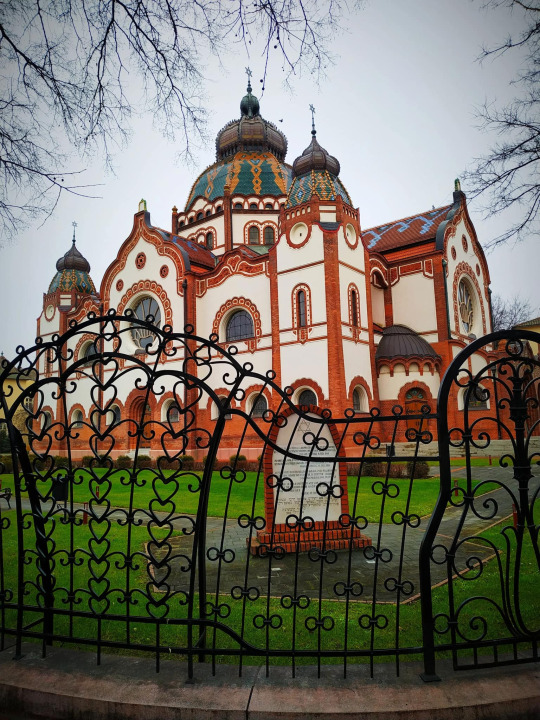#serbian post
Explore tagged Tumblr posts
Text

Help me get top surgery: https://gofund.me/7e7bb8c4
#(this post is a joke)#horror#horror aesthetic#terrifier#terrifier 2#art the clown#tusk#horror movies#aesthetic#letterboxd#the human centipede#midsommar#raw#martyrs#a serbian film#salo#teeth#teeth 2007#raw 2016
3K notes
·
View notes
Text
Planned to post this one on September 9th for Belgrade Pride and totally forgot my bad
Anyway I haven't posted new sapphic sketches in awhile so here are some Serbian girls that are very much in love 🇷🇸❣️

Still kinda on hiatus but I'll probably post more sapphics again eventually !
#sapphic#sapphics#sapphic art#sapphics art#wlw#wlw love#wlw post#wlw art#women in art#traditional costumes#traditional costumes art#lesbians#lesbian art#bisexual#bisexual art#lgbt art#lgbtqia#lgbt pride#serbia#serbian girls#serbian girls in love#serbian traditional costumes#how the fuck do i tag !!!#art of women in love#art of sapphics#artists on tumblr
641 notes
·
View notes
Text

Art nouveau synagogue in Subotica, Serbia, built in 1902, project by Marcell Komor and Dezső Jakab.
#synagogue#subotica#serbia#serbian architecture#art nouveau#architecture#1900s architecture#early 20th century#marcell komor#dezsö jakab#paleta post
149 notes
·
View notes
Text

going to capitalist pride but shaking my head the entire time so they know i dont agree with it
#made the same#sign at their hq last time and they trashed it :)#logs#oh in english- faggots arent screwing you capitalism is#smth along those lines but catchier in serbian#edit why am i stupid and completely fucked up the text post……..
66 notes
·
View notes
Text

Sonja Sajzor
Gender: Transgender woman
Sexuality: N/A
DOB: 26 January 1993
Ethnicity: White - Serbian
Occupation: DJ, singer, songwriter, activist, artist, Youtuber
#Sonja Sajzor#trans femme#femme#lgbt#lgbtq#transgender#trans woman#1993#serbian#white#dj#musician#singer#songwriter#activist#artist#youtuber#popular#popular post
161 notes
·
View notes
Text
this is not meant to be petty i promise but i find it interesting how from the beginning of being in a fandom space, from the beginning of being a part of some sort of community, even if it was just rebloging gifsets at 13, it was kind of a given that i couldn't do it in my native language or within the frame of my own culture? idk if i'm explaining it right but i just wonder how does it feel to share a language with your favorite fictional character and to talk about them in it too.
#and obviously it does depend on what it is that you like but even#but still even if you like some idk norwegian tv show you're mostly going to talk about it in english#like i love dark which is a german tv show but if you go to the dark tag on tumblr it's mostly english#and what's weirder is that whenever i try for example to write some everlark meta in serbian i can't do it#ny vocabulary isn't as clear as it is on english#IT'S SO WEIRD#i mean like any fictional media#but also even the voice inside my head is in english#and it's especially easier to feel in english#cause there is this detachment or like it's some sort of performance#and it's not just language it's the general culture#it's the songs i put in my playlist#etc#it's the way i'm trying to write a modern au everlark fic but i don't know where i want them to live#like the way i see them in that modern au it's so intertwined with the way of life for young people in the balkans#and if i separate it then tge story falls apart#yes this post was inspired because i was listening to a serbian song ane being THIS IS HAYMITCH'S SONG#and then feeling sad that nobody else is gonna get it#because they don't know it 😭#or what if it's sounds weird#to someone who isn't used to a different style of music#it was nedelja by dzej#BUT THAT'S WHAT IM SAYING#this means nothing 😭#like it's never going to be a silver springs moment#AM I MAKING ANY SENSE#LIKE I CAN'T SAY HAYMITCH LISTENS TO TURBO FOLK HEADCANON#nobody understands what that means#but he does though guys trust me#it's just means he's very sad
13 notes
·
View notes
Text
if i hear one more joke about my weight i am going to kick you into the fucking sun <3
#random thoughts#(not aimed towards anyone here.)#what's that serbian phrase. jebem ti sunce iz neba.#although that's more. the sun gets fucked out of the sky there.#whatever. i hope your sun does get fucked out of the sky. there you go#feels weird to post this?? oh well not looking back. fuck it
21 notes
·
View notes
Text
in case you thought you were getting rid of meeee... surprise surprise ♡
#thank you dash for the idea <3#these writings will be for me but in case you want to stay in touch here here#i will probably make all of it about mbf ultimately <3#not like anyone gives a fuck about my lame scribblings and i can relate to that because i hate them too#but it's better to return to my articles than whatever has been going on my tumblr lately#letters from stephanie*#i feel like i am reviving my 15 year old self lmaooooo... wordpress past with a tragic end revived#will probably post in serbian too ♡
18 notes
·
View notes
Text
this translation really said "her [Penelope's] dear Odysseus" and expected me to move on with my day.
#i think i'm going to make a tag for when i feel insane about the serbian translation of the odyssey#odiseja#<- it's going to be this because. that's the odyssey in serbian#just so i don't have to start every post with:#“iN THIS TRANSLATION I USE-”#okay yeah that's all.#niko rambles
72 notes
·
View notes
Text


Decided to visit my local anime café today and ordered their Miku-themed drink which I then made a Miku fan art of said drink.
#it has been 84 years since I've last posted traditional art hello#hatsune miku#fan art#vocaloid#I know her tattoo is on her other shoulder but this is alternative serbian Miku she has it on her right shoulder instead shhhhh#traditional art#line art#brush marker#art
27 notes
·
View notes
Text

What the actual living fuck is this. (Not my image)
The psychology of some of these people deeply horrifies me I don't know if I'd rather study them in a lab or run away as fast as possible because they would literally probably want me to die
I know there are much more serious stuff in the world right now I'm just so fucking pissed about this for some reason maybe I'm just an oversensitive prick idk
#serbia#srbija#serbian#slav#slavic#slavblr#slavic stuff#slavposting#tw bombing#?#well its mentioned at least#im do sorry for posting this im just scared sort of#im not saying serbia has never dine anything wrong ofc it has im just#im just saying you shouldnt wish for this kinda stuff you shouldnt post this#србија#српски#nato#serbposting
44 notes
·
View notes
Text
(。・ω・。)ノ♡ INTRO:
Hello! I'm Ricky, or bocmo! I am a Catechism in the Serbian Orthodox church (人 •͈ᴗ•͈) (I would like to clarify, I am not Serbian, nor in Europe!)
I do art, a lot of art! Infact my commissions are open!
I am 18, and currently work off commissions. I try to post regularly, but life gets in the way ヘ(。□°)ヘ
See commission rules here v
I like many things, ranfrens, fallout [all games], metal gear solid, theology and many more! Almost anything really, I am a big media enjoyer. 💥
I have a lot of OC's, and would be happy to tell you about any of them! I may even do a lore breakdown. (人*´∀`)。*゚
Now...

The RULES 💥
No NSFW (outside of jokes)
No mocking of christianity
No insulting others (or any other form of bullying)
No talk of ED/SH etc (romanticization, I have characters with such issues)
Please feel free to repost my art on other platforms, just credit me!
PLEASE call me out if I am being hypocritical, and forgive me when I am.
#digital art#digital illustration#digital drawing#digital painting#luther ranfren#oc#oc artist#ranfren#orthodox christian#orthodox christianity#orthodox#artist of tumblr#artist on tumblr#intro post#introduction#rules#blog rules#serbian
3 notes
·
View notes
Text
me, hanging onto sanity and dear life while behind the wheel
my instructor: so here is the grave of a young girl who died a couple years ago while driving after getting hit by a bus going 130km/h

#SIR i can barely understand you when you tell me how and when to let go of the clutch and mix up right and left#do NOT be telling me this right now#he's a nice man unfo he's also serbian which automatically makes him insane#btw making stupid posts about driving helps me deal with the stress sorry for everyone who never wants to drive and avoids drivers like the#plague i support your lifestyle#logs
26 notes
·
View notes
Text


▪️Serbian girl dressed in serbian traditional clothes from Velika Hocha(srb. Велика Хоча/lat. Velika Hoča), Southern Serbia 🇷🇸
📸cotkdesanka
#serbian#balkan#europe#serbian beauty#serbian traditional clothes#serbian folklor#serbian women#serbian tradition#Serbian culture#Velika Hoča#serbian aesthetics#Post Ottoman
16 notes
·
View notes
Text
how to take care of monuments in serbia:
step no. 1: put them under the jurisdiction of the intitute for the preservation of cultural monuments
step no. 2: do nothing
step no. 3 (optional): if any other party offers to help preserve or restore them, prevent them
congratulations, you can successfully enjoy watching the monuments crumble, fall appart and endanger the public safety
#post made about tešnjar but is unfortunately applicable to pretty much all serbian cultural herritage#ura.txt
2 notes
·
View notes
Photo

Electra Elite
Gender: Transgender woman
Sexuality: N/A
DOB: 12 August 1977
Ethnicity: White - Serbian
Occupation: Singer, sex worker
#Electra Elite#lgbt#lgbtq#lgbt people#trans people#transgender#trans woman#1977#white#serbian#singer#sex worker#popular post#popular
125 notes
·
View notes